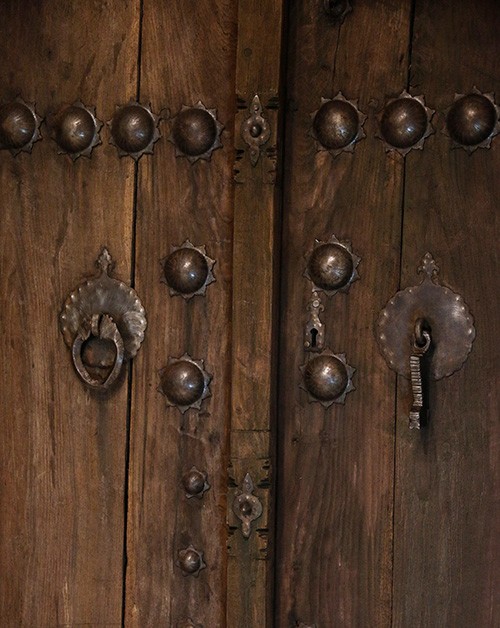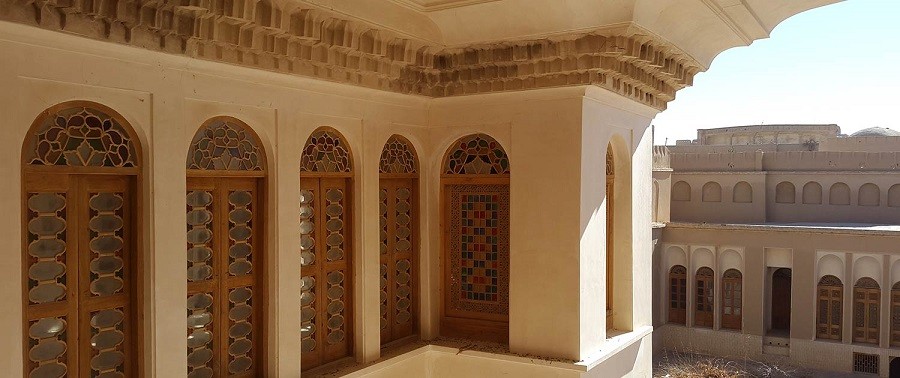The Persian House in central plateau of Iran | A structure with exceptional beauty

The Persian architecture is considered as one of world’s great arts, due to its exceptional beauty and elegance. The architecture of traditional Persian House has always been famous and this style made beauty and diversity in architecture, along with creating attractions in all parts of Iran. The Persian House was inscribed on UNESCO World heritage Sites.
Table of Contents
The connection between environment and architecture
Since Iran is a four-season country, it has diverse climatic conditions and these conditions have had great influence on the architectural style. As a result, we can see thatched houses in the north, porch houses in west and houses with central yard in hot and desert parts of Iran.
The history of the Persian House’s architecture
The original architectural patterns and symbols that are seen in Persian House date back to pre-Islamic architecture and were modified, expanded and applied in post-Islamic time. Studying the houses left from different historical eras, we can see that the Persian urban style and house architecture experienced radical changes since Qajar dynasty in the time of Nasser-e-din Shah, because of increased political contacts with Europe.
Different parts of Persian House
The simple façade
The external façade of Persian House is simple and without any decorations. Persian House’s frontage just had an entrance door. Therefore, there was no distinction between the houses of the poor and the rich, and the only difference could be their entrance doors.
Kubeh
Kubeh is traditional Persian door knocker. On one side of the entrance door, there was a thick bar of metal that produced a deep tone, which was used by men. On the other side, there was a metal ring that produced lighter sound, which was used by women. As a result, the host would know if a man or woman is about to enter the house, and would dress up according to that.

Kubeh

Kubeh
Hashti
After the entrance door, there is a space which is called ‘Hashti’ or vestibule. ‘Hashti’ separated the house’s private areas from the guests’ area, and access to each of these spaces was made through a roofed corridor (Dalan-e-voroudi).

Hashti

Hashti
Dalan-e-voroudi (the entrance corridor)
Hashti was connected to the exterior yard by a meandering, roofed and narrow corridor named ‘Dalan’. This corridor prevented out standers to have a furtive look on what was going in the yard immediately after their entrance.

Dalan-e-voroudi (the entrance corridor)

Dalan-e-voroudi (the entrance corridor)
Andarouni (interior)
By organizing different parts of the house around one or several central yards, a private building was created separate from the world, and ‘Hashti’ was the only linking way. This private section was called ‘Andarouni’. In this inner quarter women of the house were free to be without hijab and without being seen by an out stander.
Birouni (exterior)
The section equivalent to Andarouni for men is called Birouni. In this section, the man of the house greeted his guests.

Khaneh Khshti Yazd
Yards
A yard is one of the main architectural features of the Persian House.
There were 3 yards in the old and rich houses:
By passing through the corridor; you enter the exterior (Birouni) yard, which was public and was used for different ceremonies. Narenjestan yard was so small that its roof could be covered during winter. The interior (Andarouni) yard, was used by the family members. Some times this yard was so green and big that seemed like a garden in the house.
Talar (The hall)
In Iranian culture, hospitality has a major importance. This section of the house usually had marvelous interior decorations. Talar was decorated by plaster works, Muqarnas and drawings and was used for greeting the special guests.
Panjdari (a five windowed room)
Panjdari is a large room, often flanked to the main Talar and was connected to a large balcony. From five large contiguous windows it had a view to the main courtyard of the house.

Panjdari (a five windowed room) | Ameriha House of Kashan

Panjdari (a five windowed room) | Tohid house of shiraz
Summer mansion and winter mansion
In Persian House, there are 2 separate sections for winter and summer uses. The summer mansion was located in southern parts of the central yard, away from the sunlight, with a higher elevation and bigger openings to cool the space. The winter mansion was located in the northern parts of the yard and exposed to direct sun light.

Zolfaqari Mansion Persian Architecture at The Heart of Iran’s Zanjan

AGHAZADEH MANSION, ABARKOOH Surfiiran
In addition, structures like cellars (a cold place under the ground), garden pit and wind towers are the other elements which are seen in Persian House. Also,Orsi (Sash window) is a favorite element in Persian architecture too, which is made of wooden lattice and stained glass, with an effective function in climate and natural light controlling.
It should be mentioned that all the construction materials used in Persian House are taken from the local environment, which makes the house’s repair and maintenance easy.
* Written by Arefeh Firouzan.
.























Leave a Reply
Want to join the discussion?Feel free to contribute!